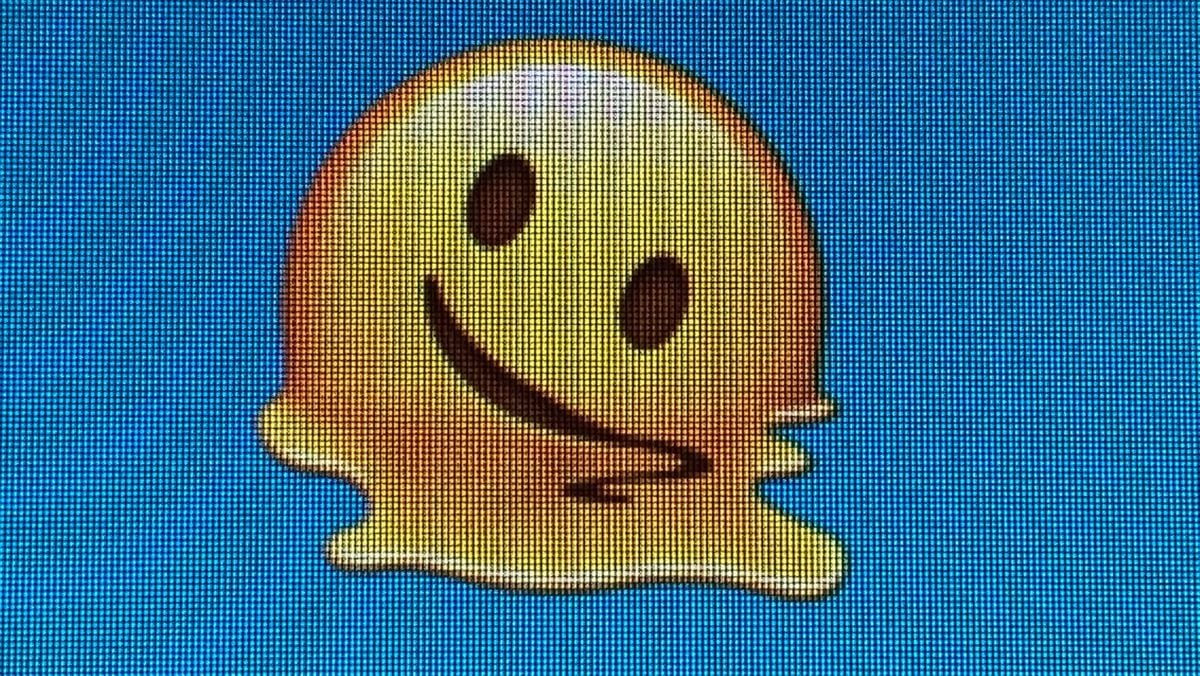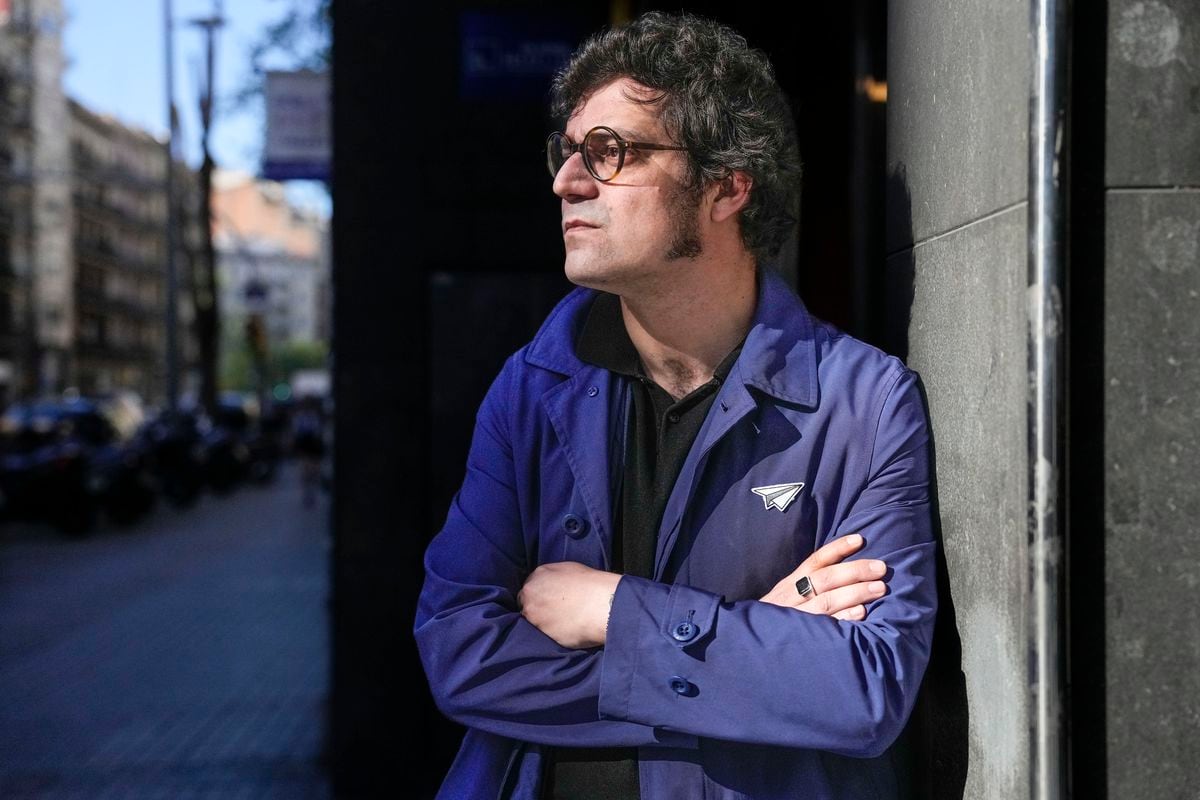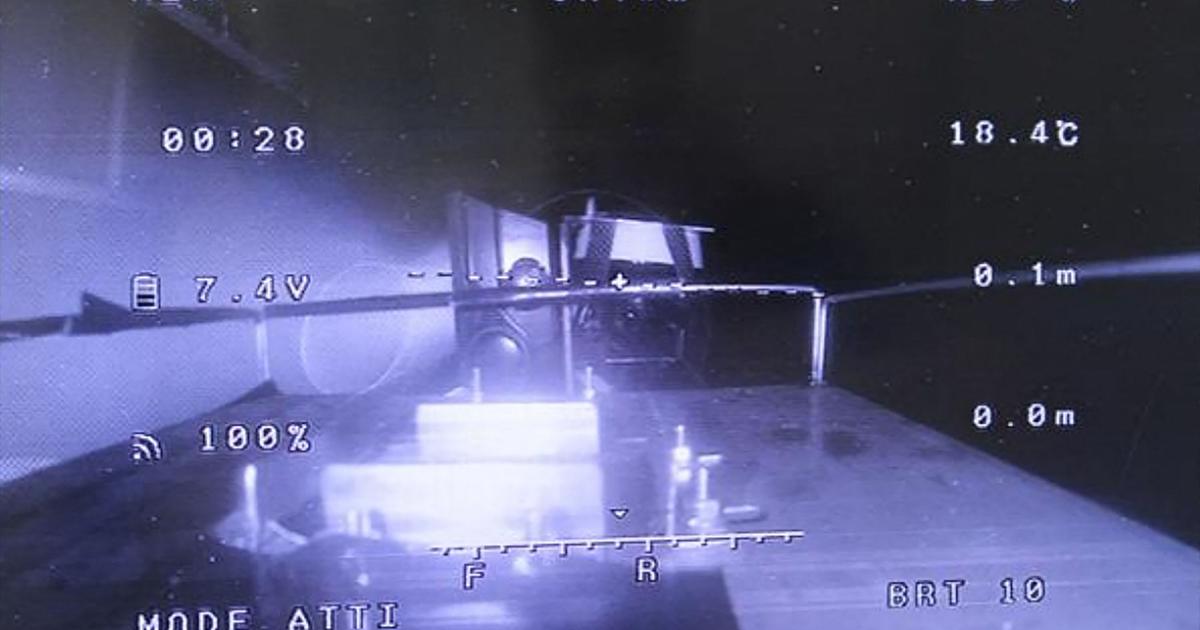In the hottest summer of our lives (and the coolest of the ones we have left, as someone always takes care to remember), in year zero of a new world economic crisis that will also come with energy restrictions and food shortages, there is a symbol, small and yellow, that represents it all perfectly: the melted face emoji.
More information
Guide to get a new emoji incorporated into mobile phones around the world
The Unicode consortium, which is responsible for encoding emojis, introduced it last September and Android and Apple mobiles introduced it earlier this year.
It can also be used on Twitter and Facebook and anyone with the slightest bit of digital life will have seen it mutate and proliferate.
It is simply everywhere.
Describing it as “a yellow smiley face melting into a puddle”, Emojipedia warns that its “distorted smile lends itself to sarcasm” and describes how it can be used literally to talk about extreme heat (one of its more common uses). frequent), but also metaphorically to express “embarrassment, embarrassment or slowly sinking into fear”.
Ever since it was introduced to keyboards, users have found very creative ways to drop the melted emoji into their conversations.
To express
burnout
labor, resignation and suffocation.
There are lovers who exchange it when they chat to express that they melt in love at a gesture or a photo, but in general it is a symbol for desperate times.
“It's my 2022 emoji. I use it in the obvious context of 'I'm melting with heat' in successive waves, but also to express fear, embarrassment and dread.
And sometimes to say 'I want to disappear', like the Homer Simpson meme in the bushes”, sums up cultural manager Adriana Herreros, who always has it in her “most used emojis” tab on WhatsApp.
"For me, sending that emoji is like seeing an ice cream melt in your hand just after paying for it, after having made an infernal queue, on the only route you had free between work and home," says the editor Yago Ferreiro, another enthusiast of that emoji,
Film director Luis López Carrasco, also a millennial, was initially intrigued by its meaning and even consulted his friends.
“Is it a mirage on the horizon, like the images that tremble on the asphalt?
When the successive waves of brutal heat arrived, I had no doubt that it represents that collective meltdown that we are experiencing, although the half smile that it throws at us seems to indicate that we must extinguish ourselves with a mixture of joy and resignation.”
The filmmaker, who is also a professor at the University of Castilla-La Mancha, underlines the perfect and somewhat suspicious
timing
of this symbol.
"Just as they introduced a virus emoji just before the pandemic, this emoji arrives before a torrid summer."
And he wonders if tech companies "anticipate our needs before we can formulate them."
How are they chosen and who decides?
In reality, the process to introduce a new emoji is regulated: there are red lines (there will never be a pictogram that looks like a brand logo or symbols like the swastika) and the one who has the power to give them the green light is the Unicode Consortium, a non-profit entity formed by representatives of large technology companies such as Apple, Google and Facebook.
They are in charge of both rejecting or approving those that are presented in popular petitions (for example, the campaign to get a paella one that was promoted from the Valencian Community) and of proposing them internally.
The case of the melted face was of the seconds.
Jennifer Daniel, the person who heads the Emojis Subcommittee in Unicode and, in practice, who is in charge of introducing new pictograms in the official dictionary that is made each year, got in touch in 2019 with Neil Cohn, a professor at the University of Tilburg, in the United States, expert in the language of comics.
“Daniel asked me if she could use my manga knowledge to help create an emoji.
We had several conversations over several months in chats and Google Docs.
We were talking about a very common convention in Japanese comics called
paperification
, that is, when the characters turn into paper and fly away.
This idea was too complex for an emoji, so we turned the idea of transformation into a meltdown, which is also a very conventional action in visual culture and has some similar meanings and some more added ones,” explains Cohn.
The final design of the face was made by a graphic artist named Erik Carter.
Therefore, the year symbol has at least three parents: Daniel (who identifies as non-binary and uses the
they/them
pronouns ), Carter, and Cohn.
Researcher Cohn, who has also become a frequent user of his own creature, is amused at the creative uses it is being put to, but he is not surprised.
“We already intentionally designed it to be very polysemic, because that is how they become more effective in communication.
We didn't anticipate all of these ideas — the embarrassment, the fear, the exhaustion — but eventually they all come together in frames of meaning related to the heat or the result of the heat,” he says.
In polysemy is the magic of many emojis of a cryptic type, such as the black hole in the ground or the clown, which has acquired an ironic use.
"They are my favorite.
They require an effort to guess the meaning that the sender of the message wanted to give it.
Solve the riddle”, says Adriana Herreros.
“Every time I use it more and I use it whenever I want to express something indeterminate, with a tragicomic and ironic touch.
Most of the things we feel today are indeterminate and there are no words to define them.
And suddenly an emoji comes undoing that condenses everything”, agrees Héctor García Barnés, author of an essay,
Futurofobia
(Plaza & Janés), about the generational anguish before the future that carries on the cover the drawing of a person balancing on a tightrope, but it might as well carry a melted emoji.
García Barnés graphically describes this pictogram “as if Francis Bacon had drawn a
smiley
”.
Bacon or the Barcelona painter Marria Prats, who is currently exhibiting at the Miró Foundation and who has incorporated the iconography of the
distorted
smileys to his work.
“It's like the decomposition of a sign that was cute and
kitsch
and now looks stupid.
That is why it captures our time well, in which it seems that we smile at our decomposition and ironize about ourselves in order to survive.
Nobody uses sad faces in a literal sense anymore, we only use them ironically.
And that is why the melted smiley is the messiah of all
smileys
”, adds García Barnés.
The melted emoji, many of its users point out, has an ironic but not cynical veneer and serves to empathize and communicate a shared resignation.
"It generates a curious solidarity," says the author of
Futurofobia
.
“You are burned, I am burned.
We both know it.
It is an emoji that unites”.
Sign up for the weekly Ideas newsletter
here .
50% off
Subscribe to continue reading
read without limits
Keep reading
I'm already a subscriber









/cloudfront-eu-central-1.images.arcpublishing.com/prisa/KMEYMJKESBAZBE4MRBAM4TGHIQ.jpg)



